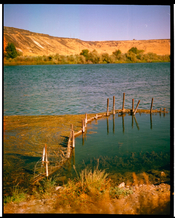Hello all,
I’ve slowly been getting an Imacon Flextight 848 I have access to back in working condition. I’ve clean both light tubes, the lens, and the CCD gently with a static free cloth, but I am still getting this color banding issue, especially in skies but throughout the rest of the image as well.
I’ve included an example of some Cinestill 50D in medium format. This issue has also happened using Gold 200.
I’m suspicious that it could be a connection issue somewhere in the machine, but I wanted to post here in case someone with more experience happens to recognize the issue as I’m getting a bit out of my depth.
Thanks for you time!
I’ve slowly been getting an Imacon Flextight 848 I have access to back in working condition. I’ve clean both light tubes, the lens, and the CCD gently with a static free cloth, but I am still getting this color banding issue, especially in skies but throughout the rest of the image as well.
I’ve included an example of some Cinestill 50D in medium format. This issue has also happened using Gold 200.
I’m suspicious that it could be a connection issue somewhere in the machine, but I wanted to post here in case someone with more experience happens to recognize the issue as I’m getting a bit out of my depth.
Thanks for you time!






